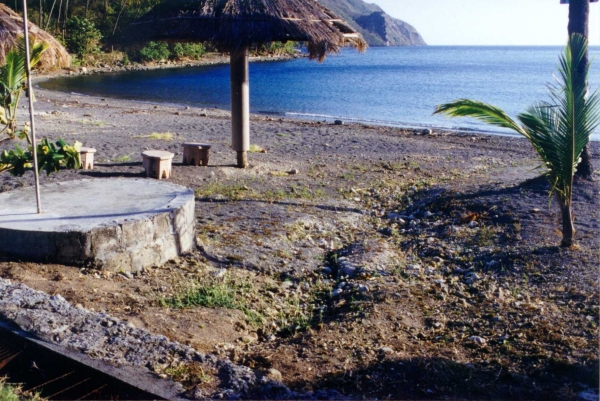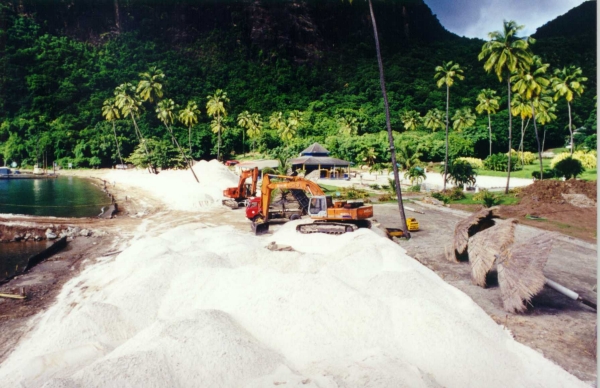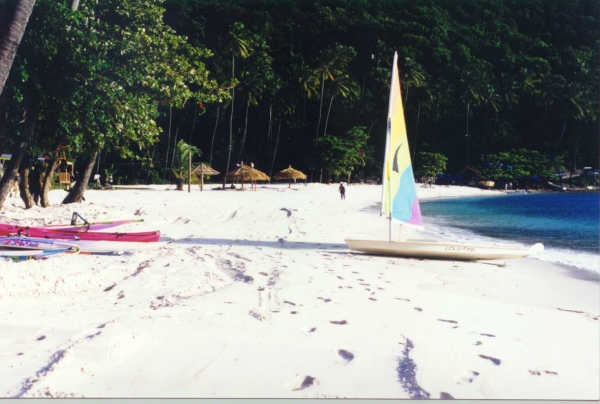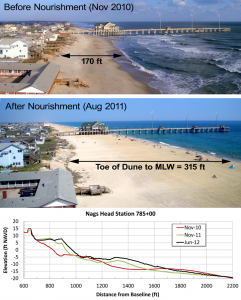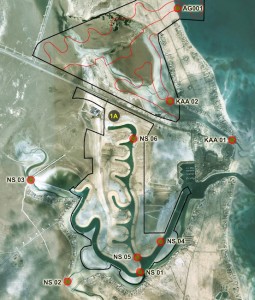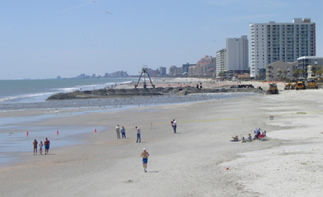Project: Beach Restoration
Client: Hilton International Corp & Jalousie Plantation Corporation
Key Design Problems Addressed:
- Exceptionally steep nearshore slopes
- Little wave action except during rare storms
- No suitable on-island or inshore sand deposits
- Sensitive reefs nearby
- Difficult site access
- Budget-limited and tight deadlines
Jalousie Plantation is a five-star resort along the southwest coast of St Lucia (West Indies), situated between two of the highest peaks (Petit Piton and Gros Piton) in the Caribbean. The owners had attempted to build a recreational beach between the pitons on a steep gravel beach. Poor-quality material initially placed over the gravel was unstable and did not produce the desired result. CSE was retained in 1995 with ongoing work through 2009 for successor owners. A white-sand pocket beach extending 250 meters alongshore was constructed using imported sand and a number of innovative design techniques. This beach-expansion project added considerable value to the resort. Other work by CSE included design of shore protection and a feasibility study evaluating additional pocket beaches within the resort property.
CSE was retained by the owner to evaluate beach erosion and hurricane damage at Jalousie Plantation Resort, St Lucia. The site presented several unique challenges because of steep offshore slopes. Natural sand beaches are rare around most of the island, yet the owner needed a viable beach amenity for the resort. Prior attempts at nourishment had met with little success. CSE conducted a detailed site investigation and surveys to determine if an artificial beach could be maintained at reasonable cost. The evaluation also included review of wave heights, water levels, and runup limits during Hurricanes Iris and Luis(1995), both of which eroded the existing beach down to the native gravel level. Studies indicated a sand beach was only feasible if the beach face and backshore slopes could be reduced.This would allow normal cross-shore movement of sediment and lessen the tendency for rapid losses down-slope. CSE developed a design which achieved more natural slopes and expanded the useful recreation area by 50 percent. The design also incorporated a backshore “stockpile” area which could be used to renourish the profile gradually as needed. With no local sand source, CSE located a suitable borrow area in Guyana and arranged delivery to the site by barge. The project was constructed in record time so the resort could reopen on schedule.

